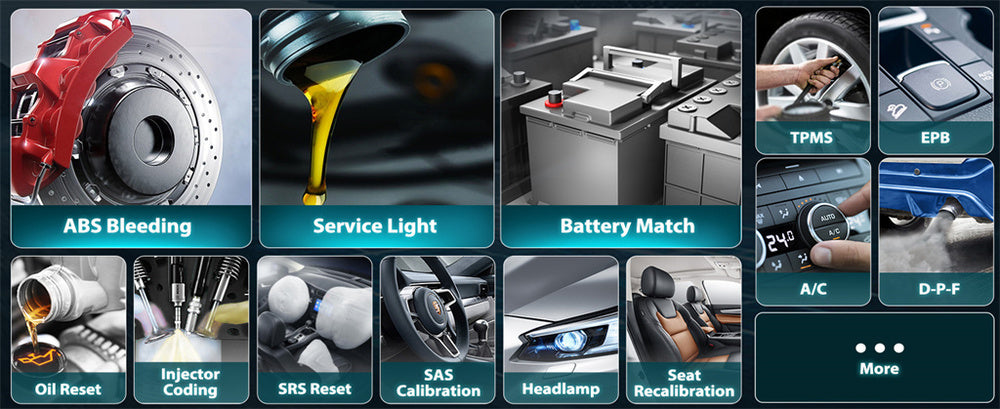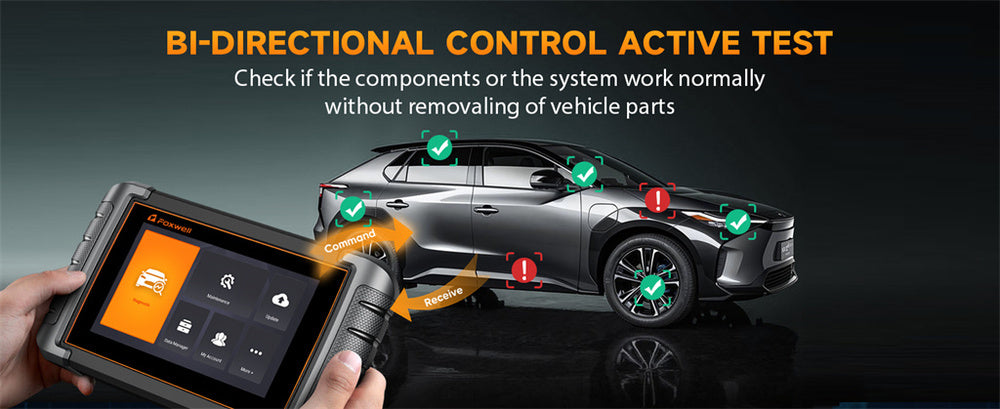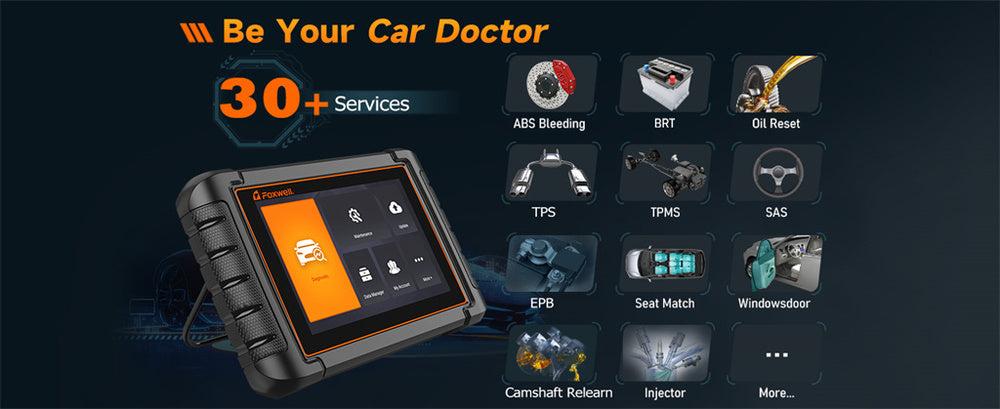Imagine yourself on a long road trip through the desert in July with temperatures topping 100degF outside and your car's air conditioning giving out. Sounds like a nightmare scenario? Unfortunately, many drivers have faced such situations first-hand, but could there be an effective solution to avoid disaster before it even occurs?
Recent news stories have underscored the increasing significance of regular vehicle maintenance to avoid unexpected vehicle breakdowns.
With summer heat waves increasing in intensity, maintaining your AC system's health becomes even more crucial - enter the car air conditioner scanner - an invaluable tool that helps diagnose and service vehicle cooling systems with ease and precision.
These innovative car scanners make it possible to keep an eye on your car's AC system, ensuring it runs optimally even during hotter months. Let's examine their scientific applications, choose an appropriate scanner, and create a DIY guide on how to use it effectively.
Car Air Conditioner Scanners and Their Science

How They Work
Car air conditioning scanners are sophisticated devices designed to interface with an AC system through its On-Board Diagnostics II port.
Utilizing advanced sensors and algorithms, these devices collect real-time information on various components within an AC system - such as refrigerant levels, compressor performance and airflow rates.
By connecting to OBD2, these scanners gain access to your electronic control unit (ECU) and retrieve diagnostic trouble codes (DTCs).
Data Collection
A car air conditioning scanner's primary role is to collect and analyze data. Key metrics may include:
- Refrigerant Levels: Ensuring the AC system contains an adequate amount of refrigerant for maximum performance.
- Compressor Efficiency: Monitoring compressor operations to detect issues like overheating or mechanical failure.
- Airflow Rates: These tests measure airflow through AC vents to identify any blockages or fan issues. At the same time, Temperature Readings examine the temperature differential between the inlet and outlet to evaluate cooling efficiency.
Comparison With Traditional Methods
Its Traditional AC diagnostics rely on manual inspection and mechanical gauges for measuring refrigerant pressure and temperature measurements; this can be both time-consuming and less precise than using car air conditioner scanners, which offer:
- Speed and Efficiency: Automated scans deliver immediate results.
- Accuracy: Advanced sensors ensure precise measurements.
- Comprehensive Analysis: Capable of identifying multiple issues simultaneously for an overall assessment of your AC system's health.
Selecting an Appropriate Car Air Conditioner Scanner
- User Profiles: Individual users have different requirements when it comes to selecting an air conditioning scanner. Here is an outline:
- DIY Enthusiasts: Should focus on for DIY enthusiasts, scanners with user-friendly controls, clear instructions, and basic diagnostic capabilities would be suitable.
- Professional Mechanics: Require advanced features and extensive vehicle compatibility, plus the capability of conducting in-depth diagnosis.
- Fleet Managers: Require durable scanners capable of withstanding frequent use in multiple vehicles and provide comprehensive data management capabilities.
Before selecting an air conditioner scanner, consider these features:
- Compatibility: Make sure your vehicle makes and models are supported. Ease of Use: A user-friendly interface and clear instructions are key components for effective use.
- Diagnostic Capabilities: The ability to read and interpret various AC error codes and system parameters is crucial.
- Real-Time Data Monitoring: Enabling continuous tracking of system performance.
- Realistic Build Quality and Durability: Robust construction for long-term use in professional or fleet applications.
- Software Updates and Customer Support: Customers have access to regular software updates and technical support in order to keep their scanners current and functional.
Top Recommendations
One excellent and user-friendly car air conditioner scanner is the Foxwell NT1009. Known for its comprehensive diagnostic capabilities, user-friendliness, real-time data monitoring capabilities and robust construction, making this an excellent option for DIY enthusiasts and professional mechanics. Furthermore, regular software updates ensure the long-term reliability and accuracy of this device.
DIY Guide: Using a Car Air Conditioner Scanner
Initial Setup:
- Once connected to an OBD2 port (typically located under your dashboard), connect your scanner securely.
- Configuring the Scanner: Once powered on, follow the on-screen prompts to identify your vehicle's make, model, and year before making sure the scanner is configured properly with its AC system.
Running Diagnostics
- Turn On Ignition: Insert the key and turn it to "on" without starting your engine.
- Access AC Diagnostics: To access the AC diagnostics scan, navigate through your scanner's menu until you find this option and select it to start scanning.
- Follow On-Screen Instructions: Your scanner will walk you through each step of the diagnostic process, such as checking refrigerant levels, compressor status and airflow rates. Carefully adhere to any prompts presented for accurate results.
Interpreting Results
- Understanding Error Codes:Your scanner will display any diagnostic trouble codes related to the AC system. Consult either its manual or online database in order to interpret these DTCs.
- Suggested Solutions: Many scanners provide troubleshooting tips or suggest potential fixes based on detected errors, giving you information to address minor issues more effectively. Take advantage of this service to address minor problems effectively.
Implementing Solutions
- Basic Repairs: Based on your diagnostic results, basic repairs such as refilling the refrigerant or changing out a fuse may be possible.
- Please consult a Professional: For more complex issues, it may be beneficial to seek professional assistance from an auto mechanic. With the detailed diagnostic data available from the scanner, professional mechanics are better able to pinpoint and remedy issues more quickly.
Finalizing and Testing
- Verify Key Functionality: Once repairs or adjustments have been completed, thoroughly test the AC system to make sure it works as intended. Examine cooling capacity, airflow patterns, and overall performance before moving forward with repairs or adjustments.
- Troubleshooting: If the AC system continues to perform subpar, use a scanner to run diagnostics again and identify any outstanding issues.

Conclusion
Car air conditioner scanners are essential tools for maintaining vehicle comfort and the longevity of the AC system.
By understanding their science, selecting one that meets your needs and following an in-depth DIY guide, you can successfully diagnose and resolve AC issues, saving both time and money.
A quality car air conditioner scanner allows you to take control of its maintenance while enjoying year-round comfort when driving your vehicle.
FAQ:
How does a car scanner check the AC system?
It tests the AC components and provides detailed reports on performance and potential issues.
Can it detect issues before they become major problems?
Yes, it identifies potential AC issues early, allowing for timely maintenance and repairs.
Is it easy to use for non-experts?
Yes, most scanners are user-friendly and provide clear, understandable results.




Leave a comment
This site is protected by hCaptcha and the hCaptcha Privacy Policy and Terms of Service apply.